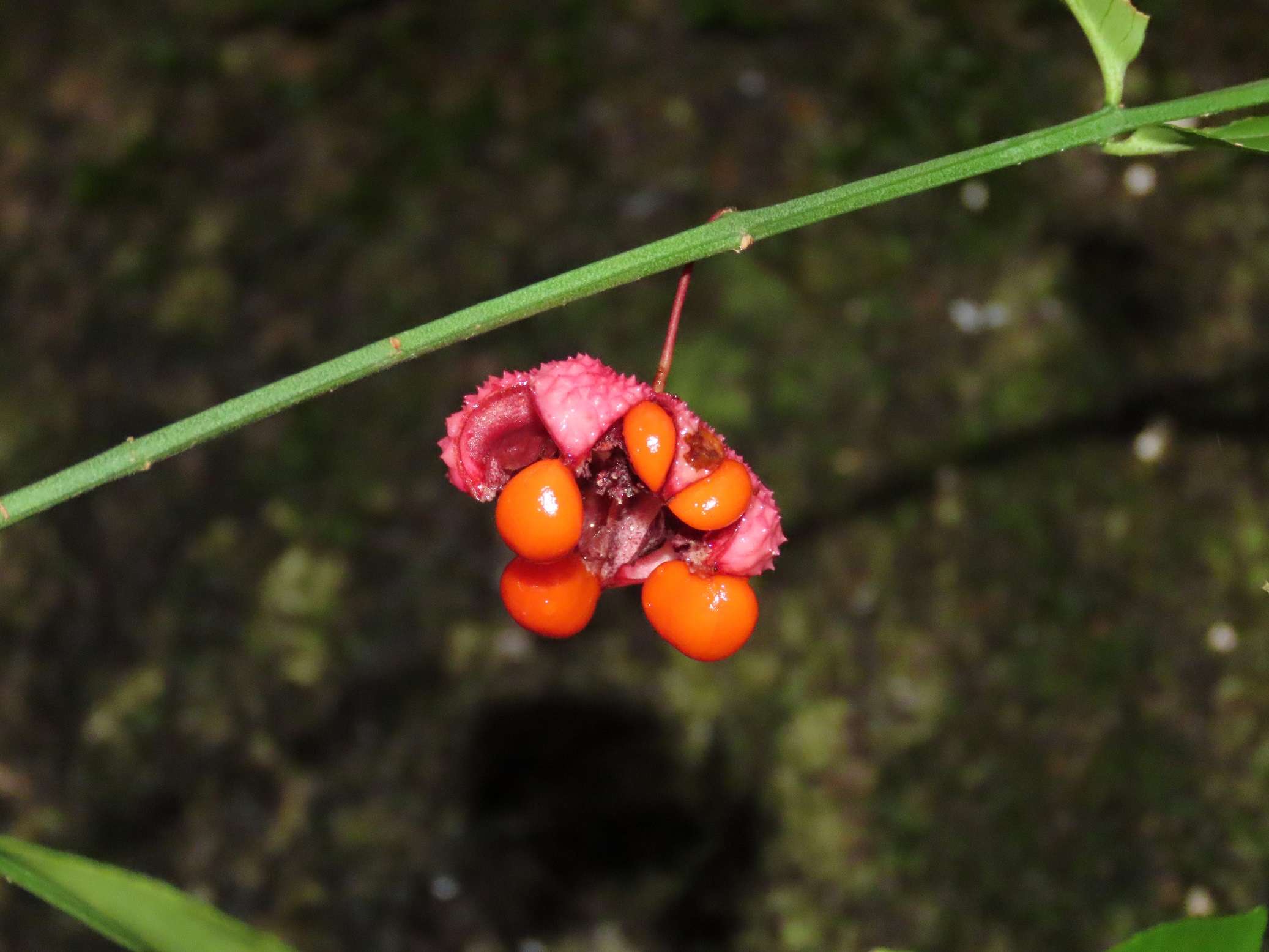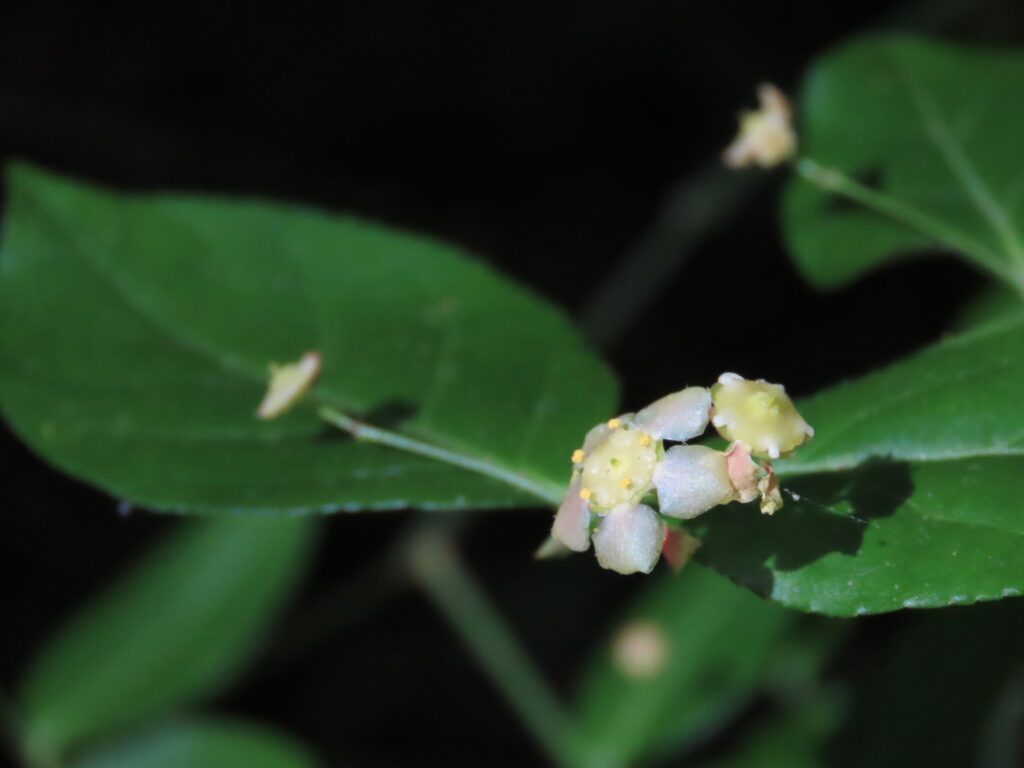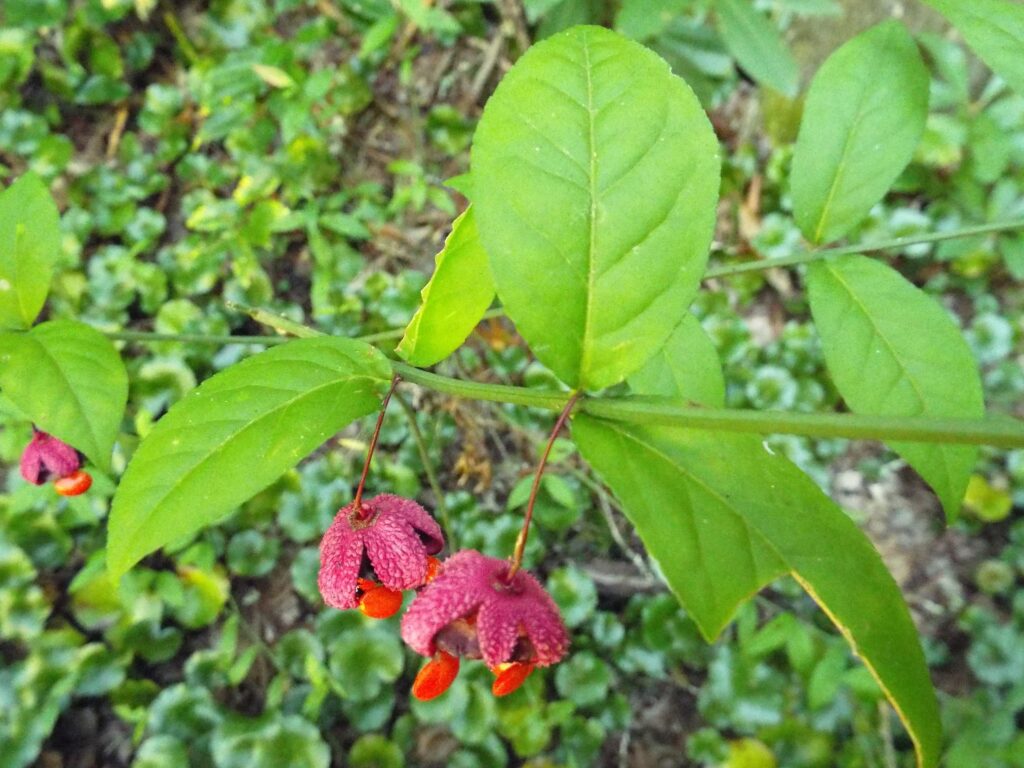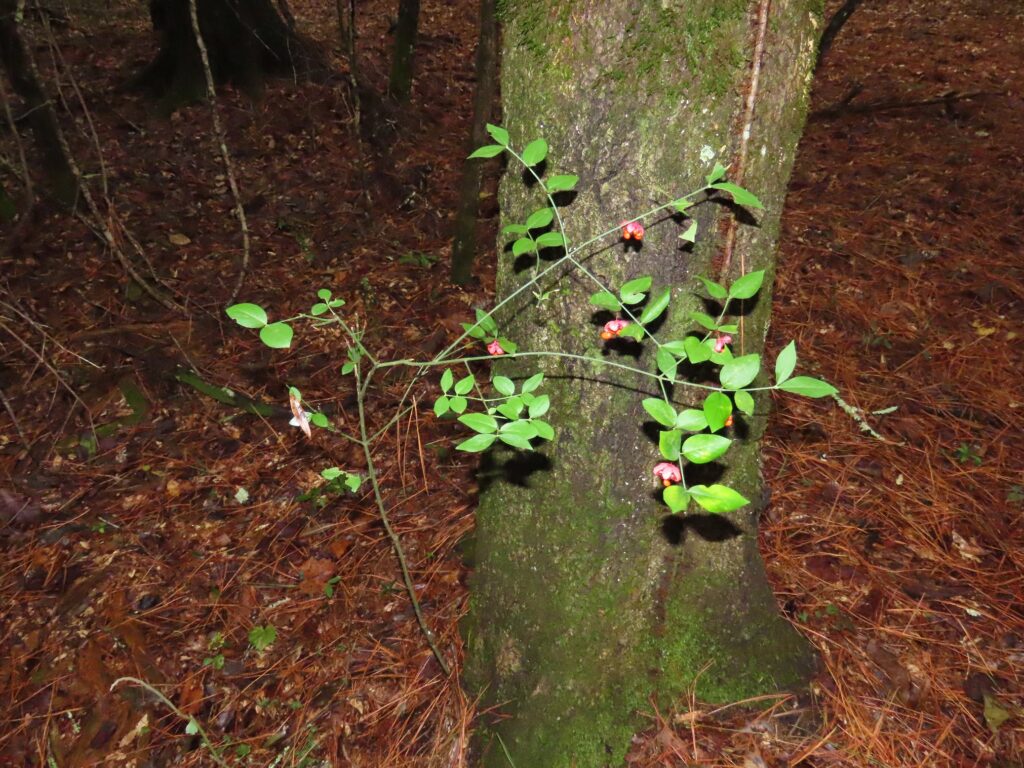



This week for Flora and Fauna Friday we have a showy shrub of the Southeast, Hearts-a-Bustin’ (Euonymus americanus), AKA American Strawberry Bush.
Hearts-a-Bustin’ is a small to medium-sized deciduous shrub found throughout the Southeastern United States. It’s a fairly common sight in moist forest understories, as it is tolerant of deep shade, but it does best on forest fringes with partial shade. Heart’s-a-Bustin’ is an easy plant to identify but also one that can be easy to overlook at certain times of the year. It has thin, spindly, solid green stems and a somewhat unkempt growth-form, usually with multiple stems. Its leaves are small, simple, and ovular with a pointed tip and can be quite thick, almost leathery, when the shrub is small. Leaves are arranged opposite each other on the stems and are the same shade of green as those stems. This monochromatic character is a rather unique combination and is often enough to identify it with just a glance. Heart’s-a-Bustin’ is a favorite food of White-tailed Deer and, leading up to winter, they often get browsed down until they’re nothing but a collection of green stems. If the deer don’t strip them bare by fall, their leaves turn a shade of crimson-red before falling to the forest floor. Heart’s-a-Bustin’ blooms twice each year, once at the end of April and again at the end of September. Small five-petalled, green-white flowers with a tinge of pink and a lime-green center emerge from the ends of long, thin pedicels that anchor back below the base of a leaf. Each flower has a twin on the other side of the stem. These flowers will mature into a unique looking fruit that gives this plant its many names.
The fruit of Heart’s-a-Bustin’ is a capsule that’s dyed an eye-catching shade of magenta and textured with many small conical points. At a glance it resembles a Strawberry but up close there’s no comparison and the best analogue for its shape is a Sea Urchin. As this capsule ripens, it dries and eventually splits apart at the bottom to reveal up to five bright-red fleshy seeds that dangle downward from the tip of each arm of the capsule. These fleshy seeds are known as arils, the same type of seed produced by Magnolias. Arils are biologically different from a drupe in that the flesh that grows around the seeds originates from the seed itself and not the fruit of the parent plant. They’re also poisonous, so don’t eat them. These capsule-aril combos are quite a striking sight and make identification of the shrubs a breeze when they’re fruiting. In case you’re wondering, the name Hearts-a-Bustin’ doesn’t have any deeper cultural meaning to it that I can find. It’s simply a poetic, romantic name for a reddish-purple fruit that bursts apart.